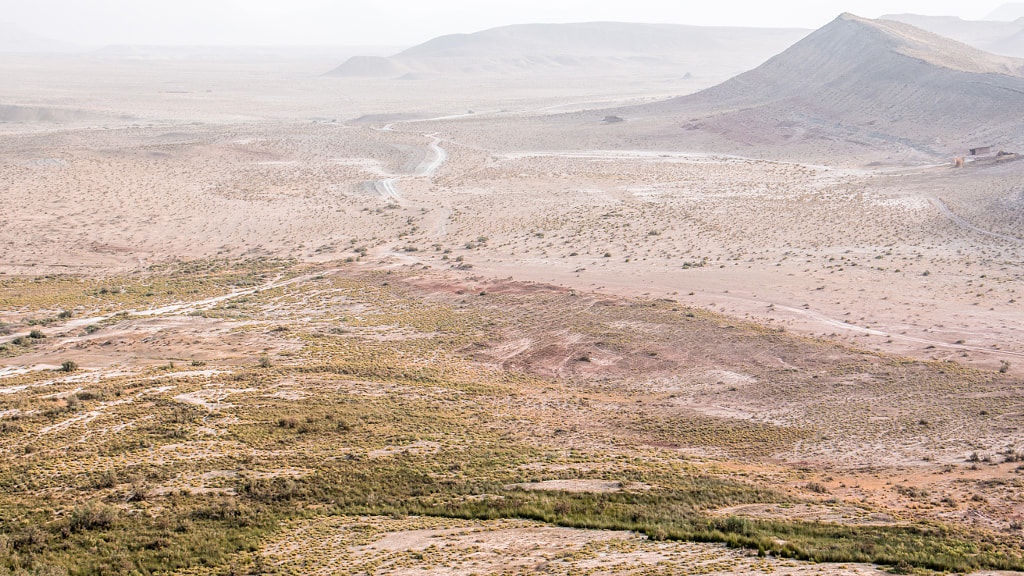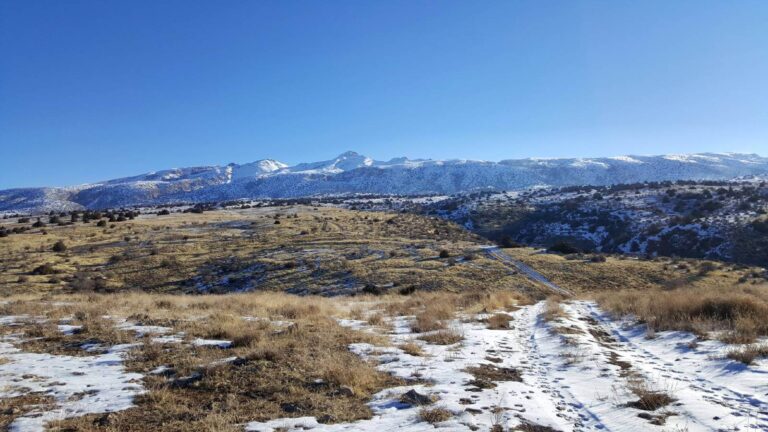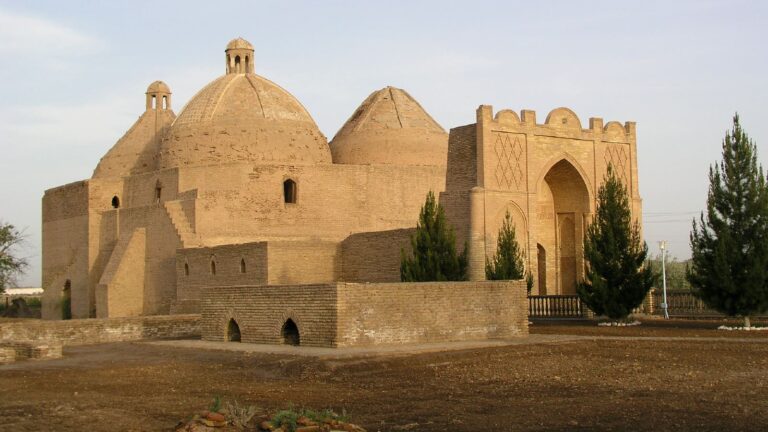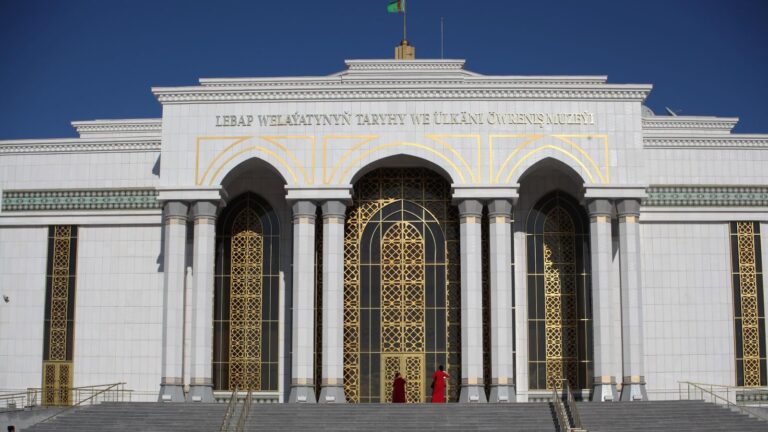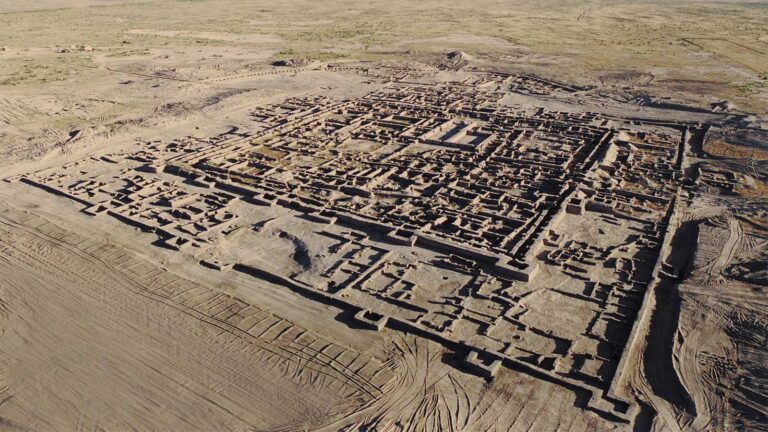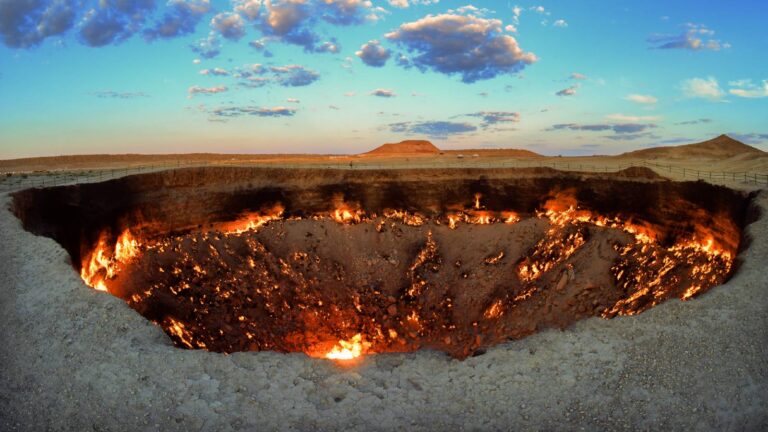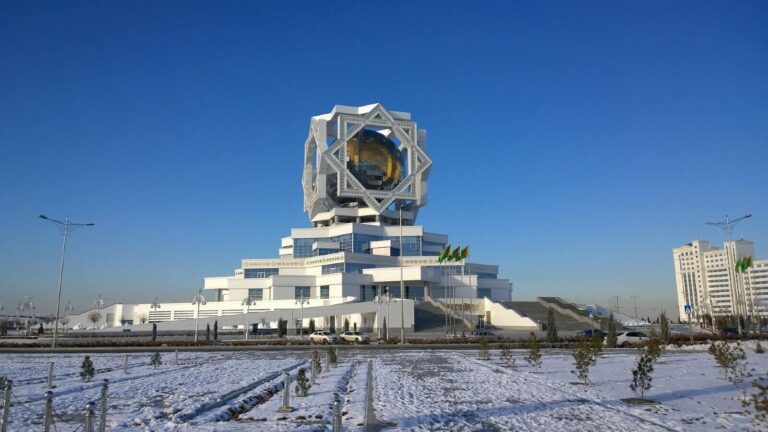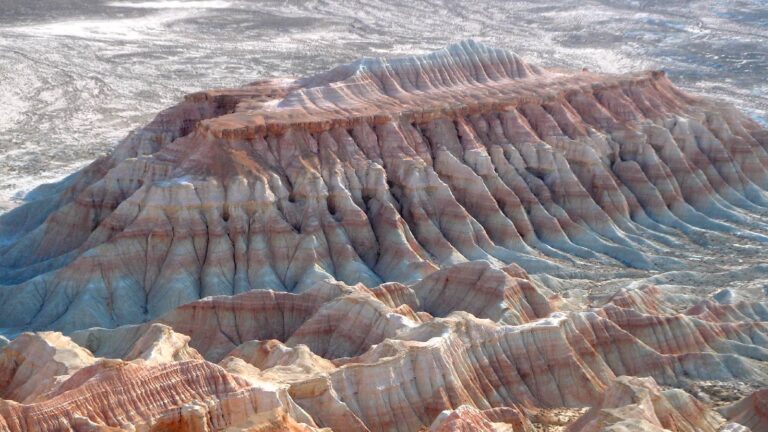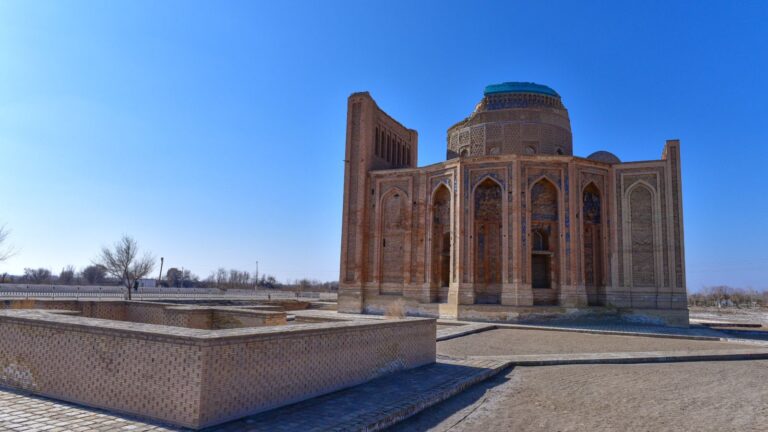The region is accessible by air, railway, and motor transport.
Lebap velayat (region) is subdivided into 10 etraps (districts).
- Darganata
- Dowletli
- Danew
- Kerki
- Koytendag
- Sayat
- Farap
- Halac
- Hojambaz
- Carjew
Its capital is Turkmenabat.
Information on leisure spots, entertainment, gastronomy, and attraction, natural, historical, and cultural sites could be find on Turkmenistan’s Ministry of Culture website www.medeniyet.gov.tm as well on the web-portal of the magazine “Tourism” www.tourism.com.tm.
There are several tourist destinations in Lebap velayat that will be of interest to tourists. Numerous hills with a historical and archaeological sites surround the modern city of Kerki, including the monuments of Bekgala, Annaguly Hill, Omargala, Sakargala, Deshiklidepe, Garadepe, Oguzdepe, Mukrygal.
The most famous historical monuments are located near the village of Astana-baba. First of all, this is the Alamberdar mausoleum of the Seljuk period dated back to the XI century. The medieval mausoleums of Astanabab and Muntasir, also known as the Tomb of Alamberdar, were destroyed during the Genghis Khan’s incursion and frequent occupation into the Amu Darya.
The Gissar mountain range of the Pamir-Altai ridge is located in the Koytendag region. In ancient times, these mountains were called the Koyten Mountains. Mount Koyten stretches to the northeast, reaching the highest point above sea level in Turkmenistan, its height is 3137 meters.
In addition, there are dozens of historical monuments on the territory of the region, as like, Kemirgala, Akdepe, Mazarlydepe, Shordepe, Shukrygala, Uchagach, Gorogly, Gumdepe, Kuldepe, Tilladepe, Mulzam ata Depe, Handepe and the Kelif fortress. Monyukdepe is the earliest archaeological site located in the region.
One of the main tourist destinations is the Plateau of the Dinosaurs, located in the village of Khojaypil. According to scientists, dinosaur footprints are 150 million years old!
Many new musical, folklore and dance groups have emerged in the Lebap velayat, such as Lebap Nagmalary, and other well-known creative and folklore groups.
- New Year Celebration- January 1
- International Women’s Day – March 8
- National Spring Festival – March 21-22
- State Flag and Constitution Day – May 18
- Independence Day – September 27
- International Day of Neutrality – December 12
- Eid al-Adha (Kurban-Bairam) – Date is determined according to the lunar calendar and is annually approved by decree of the President of Turkmenistan
- Victory Day – 9 May
- Ashgabat City Day – May 25
- Science Day – June 12
- Day of Knowledge and Student Youth – September 1
- Day of Workers of Culture and Art and poetry of Makhtumkuli – June 27
The following holidays and festivals are celebrated and held annually:
Day of Akhal-Teke horses and Turkmen Alabay, the Carpet Festival, Melon Festival, Harvest festival, Turkmen carpet Festival.
Lebap velayat covers an area of 93,730 km² and borders Afghanistan and Uzbekistan. Mount Ayribaba, one of the highest mountains in Turkmenistan, is located in the Lebap velayat. The climate is sharply continental, very dry with significant daily and annual temperature fluctuations. Winter is damp, cold, snow falls, and summer is sultry. The coldest month is January. Precipitation falls from 70 to 120 mm in a year.
The Lebap velayat economy has an agro-industrial character. The main part of it is the industrial sector. The province is dominated by gas and oil refining, oil and oil refining, chemical, electricity,
textile, food processing and building materials industries.
Velayat also belongs to the agrarian regions of the country, where large quantities of cotton, vegetables, fruits and berries, grapes are produced. The region’s agro development is due to the fact that it constitutes the industry material base for the agricultural raw materials and the production of food and non-food products processing.

